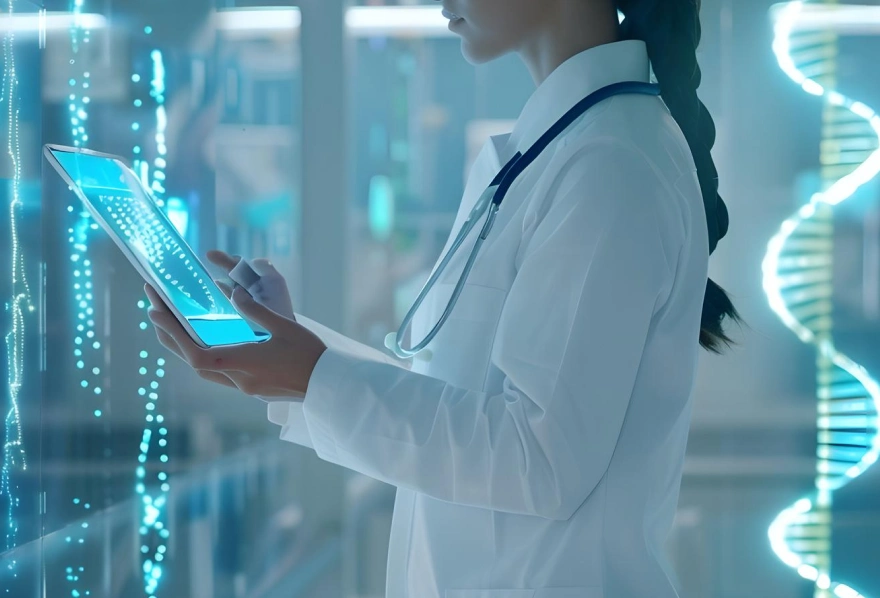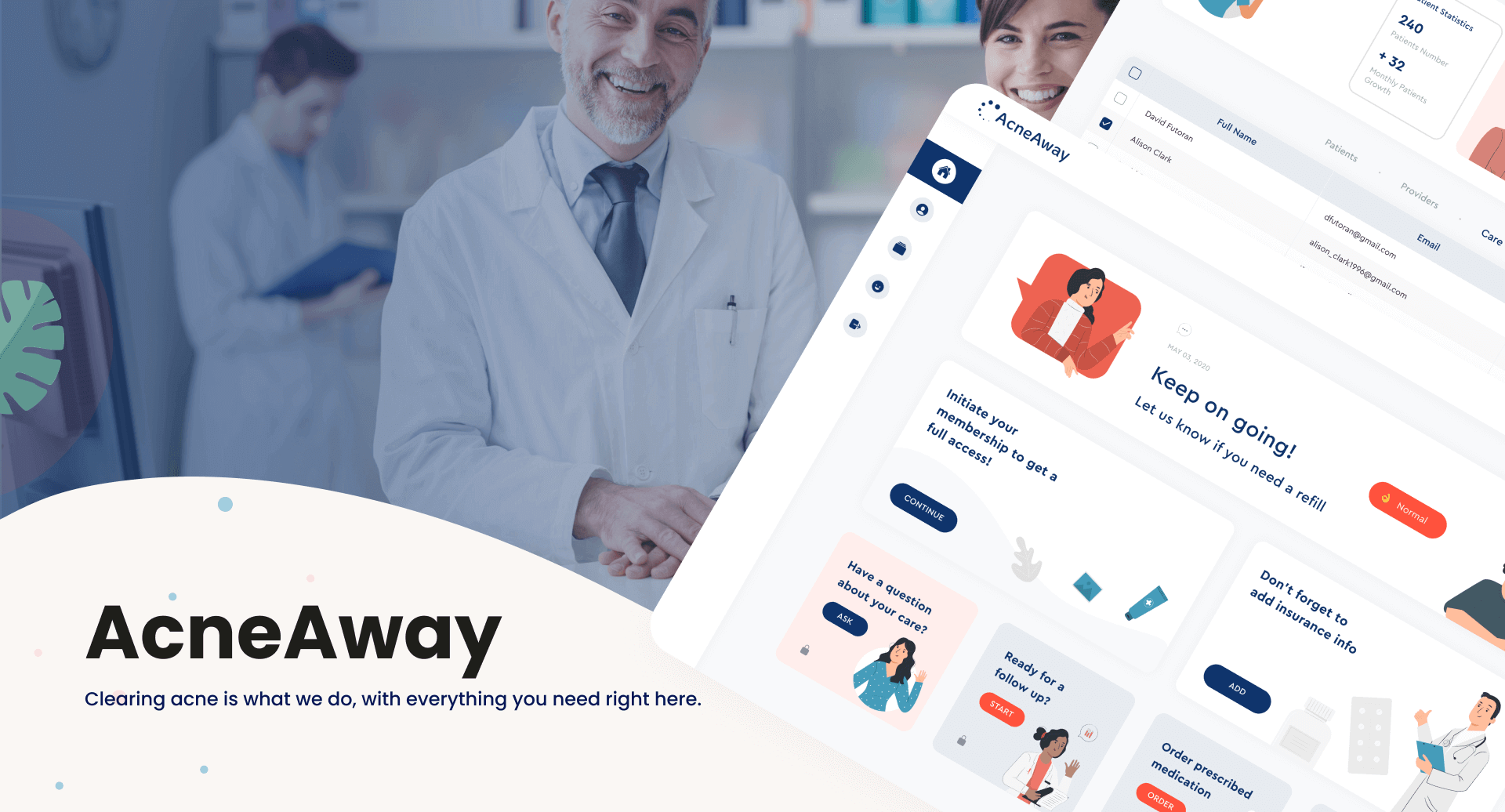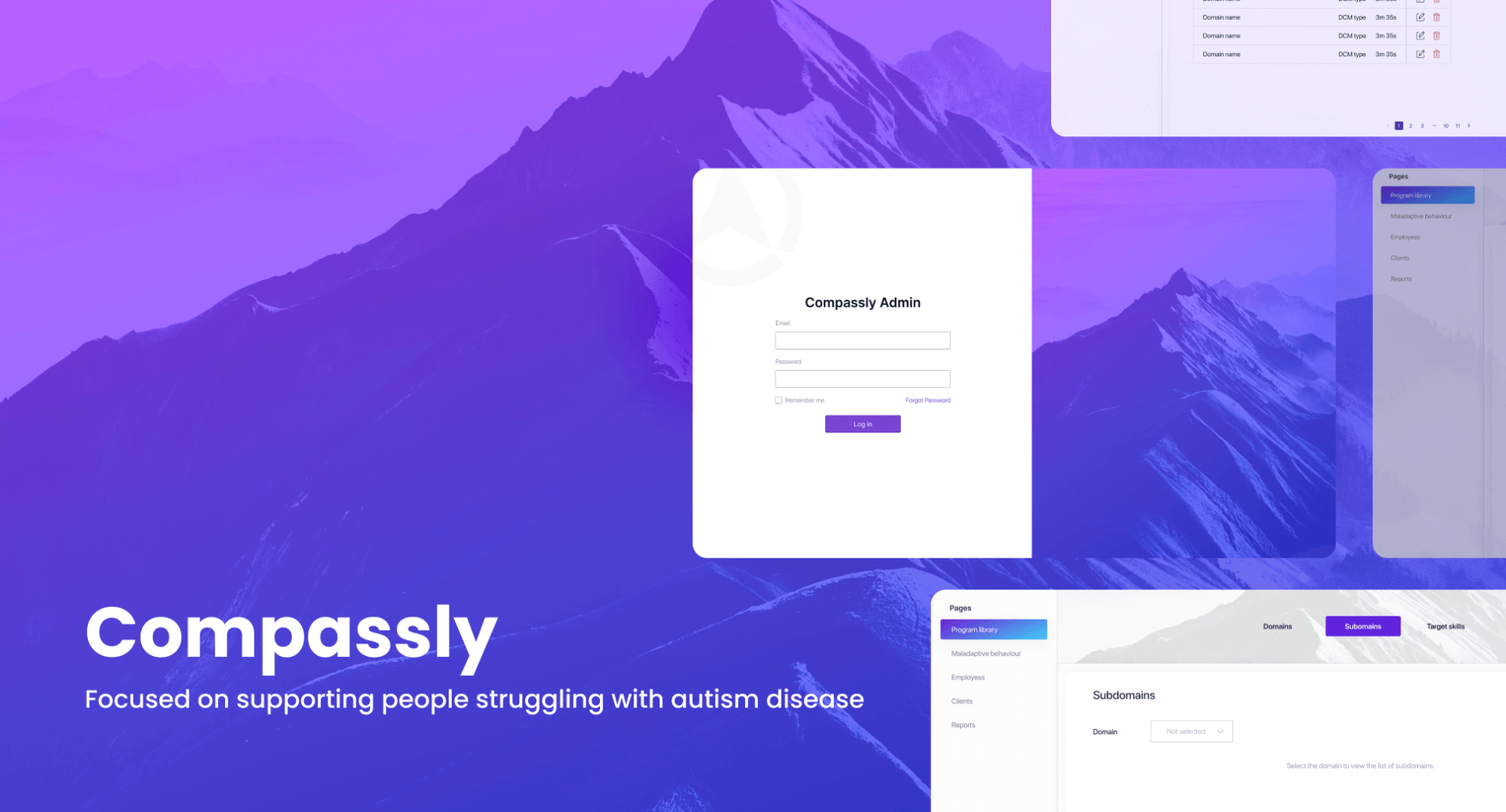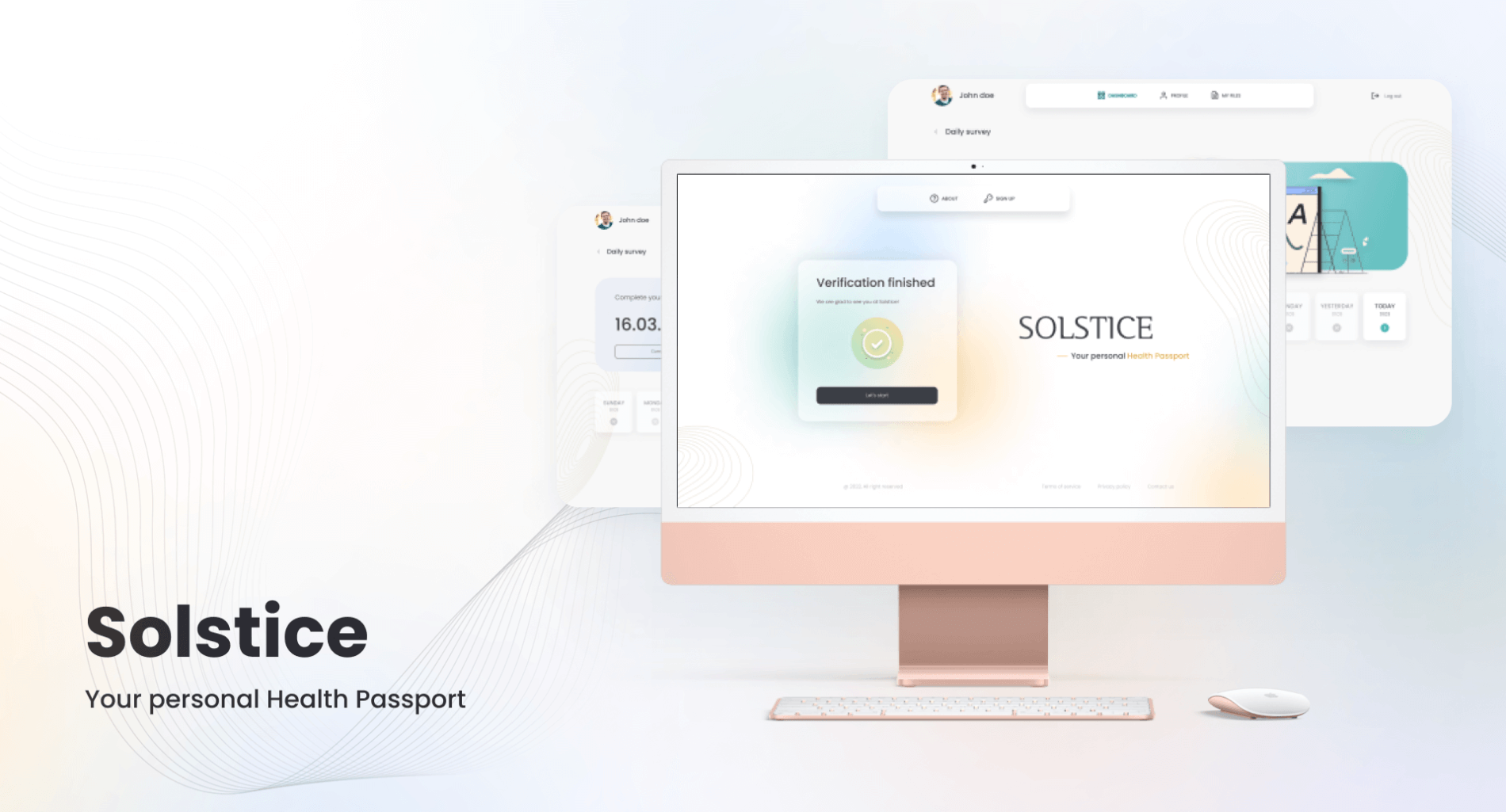Endless swirls of disruptions, overloads, manufacturers lockdowns, and other issues keep on trialing the healthcare domain today. Technology use and digital transformation are now only two things that help face the storm and find new horizons for healthcare organizations and private clinics. The medical software development industry is estimated at USD 358.5 billion in 2024, proving its importance in healthcare.
 104 Million
104 Million
The global Medical Software market size is projected to reach $104,100 Million by 2030, growing at a CAGR of 10.9%
 19 Million
19 Million
The Digital Therapeutics Market size is projected to reach $19,028 Million by 2028, growing at a CAGR of 22.8% from 2021 to 2028.
 211 Billion
211 Billion
The global Digital Pharmacy market size is expected to reach $211.9 billion by 2027, growing at a CAGR of 17% from 2022 to 2027.
What Is Medical Software Development
Medical software development covers a vast amount of activities that solve the problems of organizations within the medical sector and the relations between healthcare professionals and patients.
In essence, health software development develops an entire ecosystem where doctors are able to provide better care and patients are able to get this care easier.
The technological side of healthcare software development involves Big Data, AI, VR, telemedicine, and e-health that are working together to enhance the overall patient and doctor’s experience.
Medical Software vs Health Software
Although terms health software (health applications) and medical software (medical applications) are often used interchangeably, they do not necessarily mean the same.
Medical software (apps) are regulated as mobile medical devices. Therefore, they have to meet general safety and performance requirements established by the industry.
Healthcare software (apps) are not under this legal framework umbrella, so they usually do not require proof of their efficacy or ensuring data security.
Both health and medical applications share devices, functions and work with data. The law regarding medical apps is closely linked to the app’s intended health or.and medical purpose criteria, so it allows a clear differentiation.
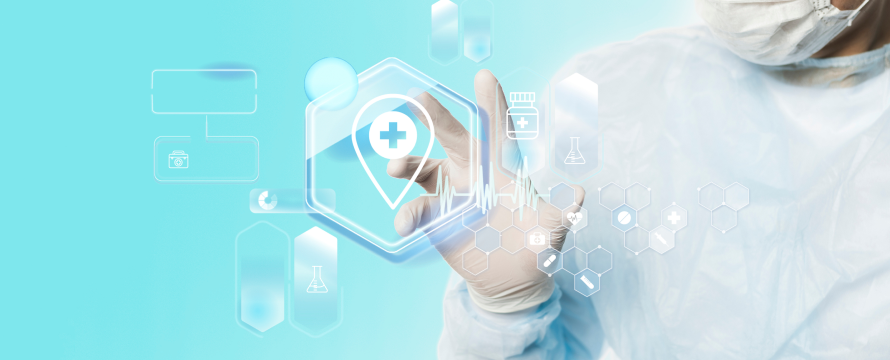
SaMD vs SiMD | The Difference
(SiMD) Software as a Medical Device (SaMD)
A software should function completely independently of existing medical devices for it to be qualified as SaMD. A software that runs or helps run hardware and technologies in medical facilities like MRI, EKG, EHR, X-ray, insulin pump or will be qualified as SiMD. SaMD can also work with non-medical devices including smartphones, watches, tablets, laptops, as well as other computing platforms.
Although SaME functions independently of medical devices, it can still work in conjunction with these devices. For example, SaMD analyzes pictures from an MRI or X-ray, monitors EKG and can also notify doctors when something goes wrong.
A tangible example of SaMD is Omron’s HeartGuide. Thus the blood pressure monitor is integrated into a smartwatch. The key idea behind the product is that the device runs medical software turning the watch into an accurate blood pressure monitor.
Software in a Medical Device
A software that helps in any way run a medical device can be classified as SiMD. Software powering any medical device, hardware or processes the data produced by a medical device is SiMD. Software that remotely controls medical devices also called SiMD.
Alongside these things, there are also many other programs that will be classified as SiMD though have some characteristics of SaMD, causing a confusion in some. For instance, SaMD often involves some level of wireless and internet connectivity. But in case this software helps organize this connectivity through WiFi or Bluetooth, it will be called SiMD.
5 Different Types of Software Used in Healthcare Industry
E-prescriptions Software
Remote Patient Monitoring (RPM)
Appointment Booking Software
E-prescriptions Software
E-prescriptions applications differ from country to country and hugely rely on Government regulations. However the key value behind this software does not change regardless of the location.
E-prescribing is used to enable doctors to:
- Write new prescriptions remotely;
- Track the prescriptions history;
- Renew or cancel prescription if necessary.
Remote Patient Monitoring (RPM)
Remote patient monitoring (RPM) allows doctors to collect patient data extracting it from sources outside of the healthcare organization. This allows them to gain more thorough data on the patient’s health and can also be used to conduct remote diagnosis based on information gathered.
The RPM software can alert a clinic or a doctor if any sort of abnormality is detected. Similar to how telemedicine works, remote patient monitoring gained momentum during COVID-19 and remains one of the most popular software used in healthcare in 2023.
Appointment Booking Software
Appointment booking applications are widely used by doctors running a private practice, clinics and hospitals. The software usually consists of two panels: a separate patient-facing panel and a management panel (for the clinic side).
The main goal of this software is to ease and streamline the booking process. It allows patients to check available spots, choose the needed doctor and book a visit online without waiting hours until the front desk staff finally pick up the phone.
For doctors and the management side in overall, this software allows the clinic to always have an easy and organized view of their schedules, finished and upcoming visits.
Health Tracking Apps
Health tracking apps represent the widest group of healthcare software since they may involve physical activity tracking, daily movement tracking, diet and weight management, mental and wellbeing health applications and the list continues.
These apps are often linked to wearable devices, where the most popular integration options are Apple Watch and Fitbit for data like daily activity, heart rate, sleep tracking. But there are many more options, such as smart rings, necklaces, as well as other bracelets that go beyond that with the goal to empower customers and move the domain further.
Remote Medical Training
Training hospitals recently started to adopt VR and AR technologies for training and education of medical staff and residents. These technologies let students to interact with a subject material, practice skills without putting someone’s life into danger and start real-life practice faster.
AR and VR training rooms are also used by experienced surgeons as a way to practice complex procedures to increase chances of success in real life. Osso VR is a tangible example that enables surgeons tio learn and practice as many times as they need.
Most Popular Types of Medical Software
-
Electronic Health Records (EHRs)
Probably the most popular type of software used in both private clinics and healthcare organizations is EHR. It is a type of electronic medical record allowing healthcare professionals and caregivers to store and process sensitive patient data in one place, while also sharing it with other members safely.
EHRs are also sometimes used to bill patients and track their medical history. They enable smooth and convenient data storing and sharing because all the information is kept within one digital space and available for users with proper permission access.
-
Electronic Prescription Systems (EPSs)
EPS software allows pharmacies to remotely run prescription processes using any compatible device. Compared to traditional paper-based and prescription pad processes, EPSs reduce errors (common human mistakes) and increase workflow efficiency for pharmacists and patients alike.
-
Electronic Medical Records (EMRs)
An EMR software acts as the key source of data regarding a patient’s medical history, any treatment and prescriptions. The range of data stored in EMR is vast – from lab results to ongoing and upcoming treatments prescribed by any doctor a patient may be visiting for the last few years (as long these doctors also use EMR).
-
Patient Portal
A patient portal works as a digital gateway responsible for connecting patients with their medical records. This portal helps patients easily book an appointment, explore upcoming and finished treatments.
Simply put, the patient portal lets patients have easy access to their healthcare information. For doctors, the patient portal improves communication with patients since both parties have one centralized place where they can communicate and share data.
-
Clinical Decision Support Systems (CDSS)
CDSS help doctors determine the best treatment course based on data. For instance, a healthcare provider is able to recommend a patient seek a specialist’s help since they had troubles with maintaining stable blood sugar levels over some time.
This advice is possible thanks to a clinical decision support system (CDSS) since it uses data on patients with diabetes to determine so doctors can decide whether a patient needs more targeted care instead of care they receive at their primary care office (PCO).
-
Telemedicine Software
Telemedicine is gaining popularity since it allows healthcare providers to easily communicate with patients irrespective of their location. Telemedicine works through chat and video conferencing software.
According to a report, telemedicine’s market value is suggested to reach $64.1 billion by 2025. Telemedicine is becoming a popular option for more and more organizations for several reasons:
- Prescribe medications for patients;
- Remotely manage chronic conditions;
- Remotely manage complex cases;
- Improve overall workflow by reducing paperwork time.
Telemedicine offers accessibility since it can also be used by patients living in rural areas or those having troubles to have an offline clinic visit.
-
Health Tracking Applications
The mHealth market is vast. From basic fitness app development to stress reduction apps with physical exercises, there are lots of apps that focus on health tracking.
The reason for that? People are becoming more aware of their health and wellness, so they want to ensure they take the best care of themselves. With applications like Apple Health, HealthKart and Fitbit, patients are now able to monitor their daily activity levels and identify potential issues before they become an emergency.
-
Medical Diagnosis Software
This software automateы the real-time exchange of patient data among several healthcare professionals, clinics or within a large organization. This allows for a secure and reliable medical diagnosis, where healthcare providers can accurately diagnose the condition by considering relevant information on a patient’s health, previous tests results and medical history extracted from a software. This software allows for a seamless collaboration between several medical fields.
-
Medical Database Software
Medical database software is similar to EHR systems since it also stores sensitive patient’s data. The difference is that medical database software categorizes data based on diseases instead of patients.
This helps medical staff in:
- Provide more accurate and effective treatment decisions through cross-referencing patients’ cases with a similar condition.
- Increase awareness regarding different clinical cases of a particular disease.
-
Imaging and Visualization Software
Medical hardware like CT scans and MRT made it easier to visualize clinics cases and internal body damage. In addition, AR and VR implemented into medical facilities allows doctors to visualize surgical planning and telesurgery.
-
Telehealth Software
Telehealth technology involves medical care, patient and medical staff education, health data services and self-care wearable services that are working together through telecommunication and digital communication technologies.
The range of telehealth technology examples is vast. And this type of healthcare software has gained popularity mostly because of COVID-19.
Pivotal Regulatory Standards to Follow in Healthcare Software Development
There are a few things that you should pay attention to when building a medical website to stay on the safe side of the law and to reach your ROI goals.
-
Health Insurance Portability and Accountability Act (HIPAA)
HIPAA guarantees patient’s data security and privacy. It mandates strict controls over the storage, transmission, and handling of electronic protected health information (ePHI).
-
Medical Device Regulation (MDR) and In Vitro Diagnostic Regulation (IVDR)
These are European regulations that govern the health software development and marketing of devices and in vitro diagnostic medical devices as well. They offer a framework that ensures the safety and performance of these products. Device manufacturers should collect and retain post-market performance information as part of the ongoing assessment of potential safety risks.
-
FDA Regulations (21 CFR Par t 11, 820, 830, 831, 832)
The U.S. Food and Drug Administration (FDA) regulations involve different parts that cover software usage in medical devices. Different parts are responsible for specifying quality system requirements for device manufacturers (820, 830, 831, 832). The part 11 deals with electronic records and electronic signatures.
-
General Data Protection Regulation (GDPR)
While GDPR is used not only in healthcare, it applies to any software processing, storing and sharing personal data of EU citizens. It mandates transparent data handling, consent mechanisms, and the rights of data subjects.
-
Clinical Laboratory Improvement Amendments (CLIA)
CLIA regulations apply to clinical laboratories, including software used for diagnostic purposes. Compliance ensures accurate and reliable test results, improving patient treatment decisions.
-
ISO 14971
ISO 14971 is a standard for risk management of medical devices. It specifies identification, evaluation and mitigation of risks associated with software development and used for patient’s safety.
-
Cybersecurity Framework (NIST CSF)
This one is also not healthcare-specific. This framework provides valuable guidelines for protecting sensitive medical data from cyber threats and guides developers on what to focus for risk management and continuous improvement.
-
Good Automated Manufacturing Practice (GAMP)
GAMP provides a structured approach to the validation and qualification of automated systems used in pharmaceutical and medical device manufacturing, including software systems.
Health software development requires thorough research, collaboration with regulatory experts, and ensuring your software complies with the relevant standards and regulations to maintain patient safety and stay on the safe side of the law.
Custom Medical Software vs. Off-the-Shelf Solutions: an Informed Choice for Clinics in 2024
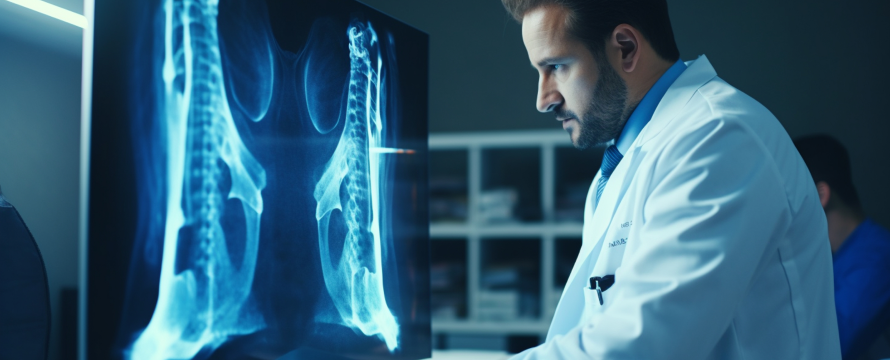
Custom Medical Software
Custom medical software refers to tailor-made applications designed to meet the specific needs and requirements of a particular healthcare facility. These healthcare software development solutions are built from the ground up, considering the clinic’s unique workflows, patient demographics, and operational intricacies. Custom health software development involves collaboration between healthcare professionals, software developers, and user experience designers.
Benefits of custom healthcare software development:
- Tailored Functionality: Custom software is crafted to fit seamlessly into a clinic’s existing processes, ensuring maximum efficiency and productivity.
- Scalability: These solutions can be designed with scalability in mind, accommodating future growth and additional functionalities.
- Enhanced Integration: Custom software can integrate seamlessly with existing systems, fostering smoother data exchange and reducing redundancy.
- Data Security: Since the software is built with the clinic’s security req
- Personalized Patient Care: Custom software enables clinics to create patient-centric solutions, leading to improved patient outcomes and satisfaction.
Exploring Off-the-Shelf Medical Solutions:
Off-the-shelf medical solutions are pre-built software products that offer a range of functionalities catering to various healthcare settings. These solutions are designed to be versatile and accessible, serving the needs of multiple clinics with minimal customization.
Benefits of Off-the-Shelf Healthcare Solutions:
- Rapid Deployment: Off-the-shelf solutions can be quickly implemented, reducing the time between selection and utilization.
- Cost-Effectiveness: Initial costs are often lower compared to custom software development for healthcare, making these solutions attractive for smaller clinics with budget constraints.
- Industry Best Practices: These solutions are usually built based on industry standards and best practices, ensuring a certain level of quality and compliance.
- Continuous Updates: Reputable vendors regularly update and maintain their products, ensuring clinics have access to the latest features and security patches.
- Proven Track Record: Established off-the-shelf solutions often come with a track record of successful implementation in various healthcare settings.
What to Choose Then?
As clinics consider their technology options in 2024, the choice between custom healthcare software product development and off-the-shelf solutions should be based on several factors:
- Complexity of Needs: Clinics with highly specific workflows and requirements may benefit from custom solutions, while those with standard operations might find off-the-shelf options sufficient.
- Budget: Custom software typically requires a larger upfront investment, while off-the-shelf solutions offer more cost-effective alternatives.
- Timeline: If time is of the essence, off-the-shelf solutions can be swiftly deployed, whereas custom health software development takes longer.
- Long-Term Vision: Clinics planning for future expansion and unique features might find custom solutions more accommodating.
Both custom healthcare application development services and off-the-shelf solutions have their merits. Custom software offers unparalleled customization and alignment with clinic-specific needs, while off-the-shelf solutions provide rapid deployment and cost-effectiveness. As clinics navigate the evolving healthcare landscape, assessing their needs, budget, and growth plans will be crucial in making the right choice for their unique requirements.
Must-Have Features for a Healthcare Software
-
1
-
2
-
3
-
4
-
Step 1:
Encryption and Decryption of Data
-
Step 2:
Multi-Factor Authentication
-
Step 3:
Automatic Log Off
-
Step 4:
Emergency Access (Break Glass Solution)
Step 1: Encryption and Decryption of Data
When building a web app that collects and stores such information as patient or provider data, appointments, laboratory test results or any other individually identifiable medical information, data transmission and storage has to be encrypted.
This can be achieved by having an SSL certificate and encrypting all data before it is put in the database. The encryption key has to be stored carefully as well, for example in Google Cloud Secret Manager.
Step 2: Multi-Factor Authentication
HIPAA MFA requires multiple steps of authentication before granting access to sensitive data. It is best to build an authentication process with not only entering username and password, but also entering the code sent to users email and also providing Google Authentication code. It ensures that a person is in fact who they claim to be before being allowed to access.
Step 3: Automatic Log Off
Most of the people do not log out of the systems whichever they are using. Imagine that you are logged in the medical system through your phone and you accidentally forget your device in some coffee shop. It is a potential threat to your personal data, including your personal address or insurance information.
Automatic log off should happen after a predetermined period of inactivity, for example 30 minutes. It is also best to add a feature of warning about the upcoming logout and asking whether the user wants to continue the session.
Step 4: Emergency Access (Break Glass Solution)
Most common example of simple emergency access is forgetting username/password. In this case the user has to gain the access to an account back and the goal here is to make sure that the user who requests the reset procedure is the actual owner of the account.
A solution here is to collect answers for some kind of security question during account registration (for example “What is the name of your favorite school teacher?”) and ask the answer to that question during the account recovery process.
Overview of Medical Software Development Pricing Models
Pricing plays a pivotal role in achieving a profitable growth in healthcare software development. The cost of either buying and developing software varies based on numerous factors.
Here are few factors that affect the final price:
-
1 Platform Type
Hybrid app development tends to be the most affordable option. These apps are developed using frameworks that utilize web technologies for development with a native shell.
Although they’re the most affordable ones, native applications are more efficient and scalable that are built separately for iOS and Android platforms.
Building a hybrid medical application may cost up to $400,000. Developing a native app for both platforms will require a healthcare organization to invest up to $600,000.
-
2 Design
Input your text
The design of the software will be one of the key factors that affect the cost. Whether it is a simple or complex app, high-quality and intuitive design is what makes the product profitable (given stable and efficient code).
The cost to design a healthcare application development varies from $3000 to $30,000.
-
3 App Maintenance & Support Services
Providers will also charge extra fee for app maintenance. Trusted healthcare application development companies strive to develop long-lasting relationships with their customers, so support services may be free of charge or included into the final price – conditions that are usually discussed at the first stages of the app development.
-
4 Compliance and Regulations
Healthcare software development requires developers to follow a specific set of rules and regulations to build a safe and compliant product. Some of them include:
- HIPAA Compliance;
- Data Security;
- Patient Data Privacy;
- Clinical Validity;
- FDA Approval;
- Accessibility.
The more regulations the healthcare application development team should follow, the higher the cost might be. This is also a point to discuss during the first two calls with healthcare software development companies to identify whether you are on the same page.
-
5 Hourly Rates & Cooperation Models
Cooperation models are a great pricing factor. Freelancers will be either the cheapest or the most expensive option – this will depend on the country developers from and how many of them your project requires.
Outsourcing and staff augmentation are two cost-effective options that help you reduce costs associated with in-house employment. A dedicated team model here will be the winner in terms of quality, speed, expertise (given you choose the proper provider) and price.
3 Key Trends in Healthcare Software Development to Watch in 2024
-
CI/CD
Continuous integration (CI) and continuous delivery (CD) are the latest trends in healthcare software development. They use automated processes to develop, test, and deploy software updates on a frequent and regular basis. These practices can help to improve the speed, reliability, and quality of software development, and are particularly useful in the healthcare industry, where timely and accurate updates are essential.
-
Serverless Architecture
Serverless architecture involves the use of cloud-based services to build and run applications/services without managing the infrastructure. This allows for scalability, cost-efficiency, and reliability.
-
MLOps in Healthcare
Machine Learning Operations (MLOps) is an important trend in healthcare application development that involves the use of practices and tools to manage the end-to-end machine learning (ML) lifecycle, from development and training to deployment and maintenance.
This is especially crucial for the healthcare industry since the use of ML helps analyze and interpret large amounts of data, improving patient care and overall healthcare delivery.
Continuous integration (CI) and continuous delivery (CD) are the latest trends in healthcare software development. They use automated processes to develop, test, and deploy software updates on a frequent and regular basis. These practices can help to improve the speed, reliability, and quality of software development, and are particularly useful in the healthcare industry, where timely and accurate updates are essential.
Real-Life Cases of Medical Software Development by Interexy
MedKitDoc
MedKitDoc is a telemedicine software that works with innovative Bluetooth-based MedKits. Healthcare professionals use MedKitDoc to remotely diagnose patients with over 49 conditions, enabling doctors with real-time health data from connected medical devices and doubling the telemedicine capabilities.
AcneAway
AcneAway is designed to make acne treatment accessible for a wider audience through telemedicine. The app represents a convenient and hassle-free way for patients to connect with healthcare professionals remotely.
How Can Interexy Help You Overcome the Greatest Challenge in a Medical Development Project in Healthcare
-
Interexy is a leading telehealth app development company. We create a dedicated team and offer augmented developers with only relevant and strong expertise, reducing issues that our clients may face during the healthcare software development process.
-
It only takes 5-10 business days from call to your dedicated team being ready to start working on your project, meaning no costs and issues associated with hiring an in-house team. By referring to us, you can rest assured knowing we take care of each and every step of the process, brainstorming and working on your success instead of doing the bare minimum the market experts.
-
We stay flexible and proactive, striving to have long-lasting cooperation with our clients to support them during the launch and further product updates.
Discuss your challenges and explore how our team can assist in resolving them!
Book a call with our expertsFAQs
-
What is medical software development?
Medical software development is the process of developing web applications or mobile apps for patients and/or healthcare professionals.
-
What are your medical software development services?
As a leading healthcare app development company, we offer end-to-end medical development solutions for a vast range of needs. We build telehealth, telemedicine, mHealth products.
We also power up healthcare software with blockchain for higher security. Other medical software development services we provide include patient engagement solutions, admin dashboards, patient data analysis solutions, video conferencing solutions and remote patient monitoring systems.
-
How to choose the perfect team for software development in healthcare industry?
Choosing the right healthcare software development partner is the crucial step in the healthcare software application development process. There are some things that should be considered. These include:
- Checking how the company works;
- Exploring previous cases;
- Checking code;
- Jumping on a call to verify good soft skills;
- Consider time zone differences;
- Making the final decision based on expertise and soft skills.
-
What experience has Interexy with custom medical software development?
Interexy’s team has an in-depth expertise in medical software development. We work with various sub industries, including insurance, pharma, fintech, hospitality, and more.
Our experts have already worked on various healthcare projects that we show on our website. We choose and create a team for each project considering custom needs, ensuring that each client gets a team with relevant expertise.
What are the healthcare development trends of 2024?
Healthcare is one of the most promising industries for software development today. These are several trends that should be considered to power up the medical development, including:
- CI/CD
- Serverless Architecture
- MLOps in Healthcare
Do your healthcare software development services follow HIPAA compliance?
Yes, our developers stay updated regarding the latest changes in regulations in the healthcare domain. We always guarantee that the final product is HIPAA compliant.



